Rudolf Belling
08 Apr - 17 Sep 2017
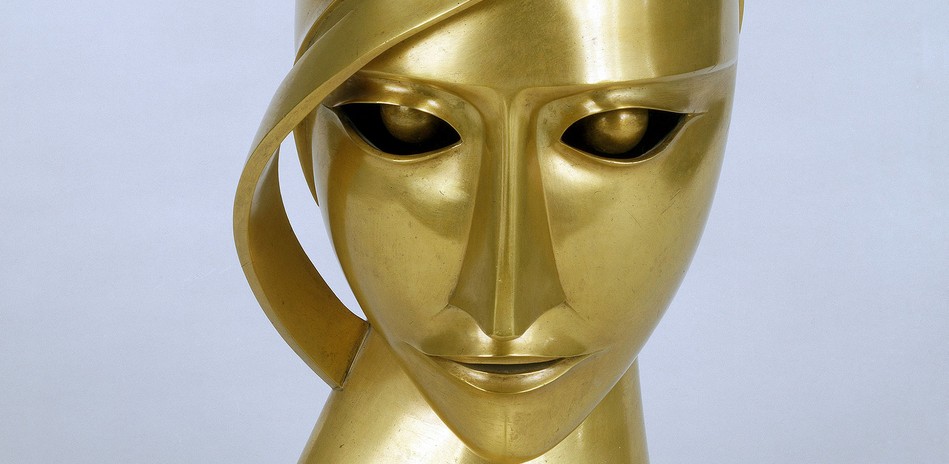
Rudolf Belling
Kopf in Messing, 1925 (Detail)
© bpk / Nationalgalerie, Staatliche Museen zu Berlin, Verein der Freunde der Nationalgalerie / VG Bild-Kunst, Bonn 2017
Kopf in Messing, 1925 (Detail)
© bpk / Nationalgalerie, Staatliche Museen zu Berlin, Verein der Freunde der Nationalgalerie / VG Bild-Kunst, Bonn 2017
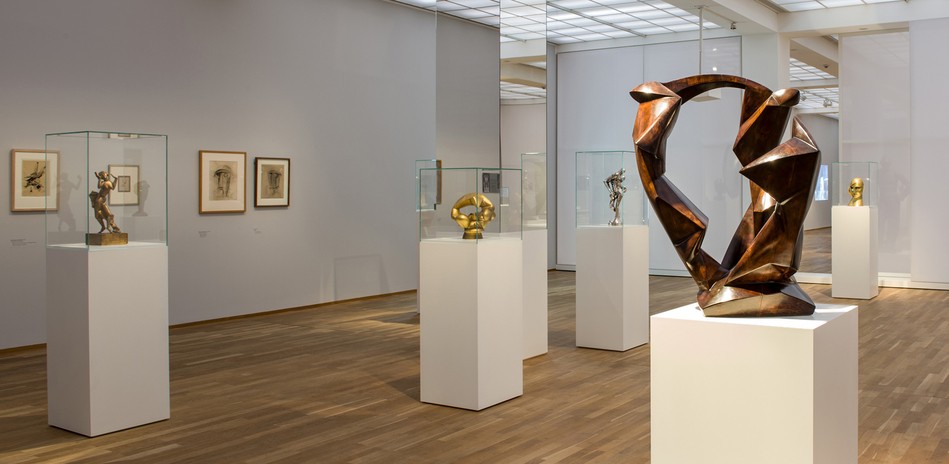
Rudolf Belling
Skulpturen und Architekturen, Installationsansicht Hamburger Bahnhof – Museum für Gegenwart – Berlin
© Staatliche Museen zu Berlin, Nationalgalerie / Jan Windszus / VG Bild-Kunst, Bonn 2017
Skulpturen und Architekturen, Installationsansicht Hamburger Bahnhof – Museum für Gegenwart – Berlin
© Staatliche Museen zu Berlin, Nationalgalerie / Jan Windszus / VG Bild-Kunst, Bonn 2017
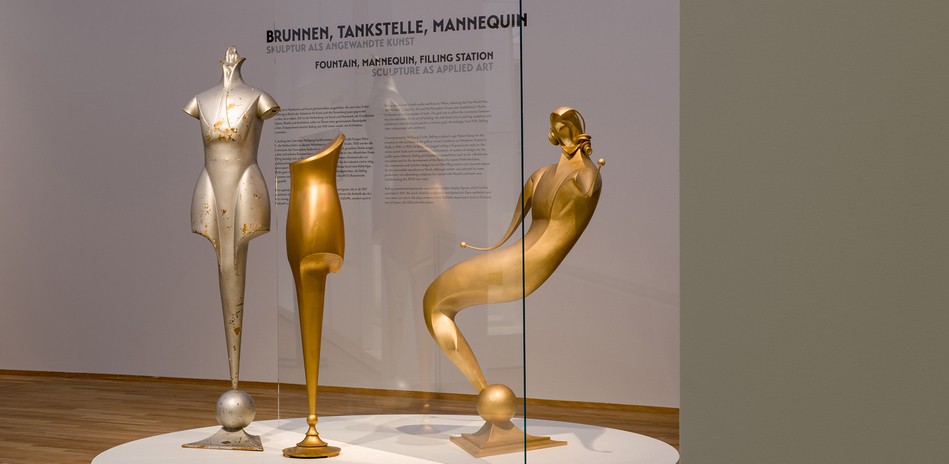
Rudolf Belling
Skulpturen und Architekturen, Installationsansicht Hamburger Bahnhof – Museum für Gegenwart – Berlin
© Staatliche Museen zu Berlin, Nationalgalerie / Jan Windszus / VG Bild-Kunst, Bonn 2017
Skulpturen und Architekturen, Installationsansicht Hamburger Bahnhof – Museum für Gegenwart – Berlin
© Staatliche Museen zu Berlin, Nationalgalerie / Jan Windszus / VG Bild-Kunst, Bonn 2017
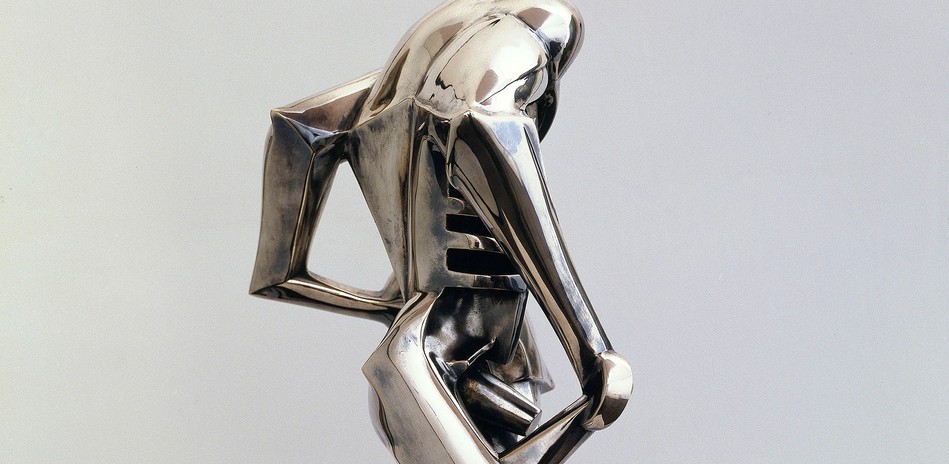
Rudolf Belling
Organische Formen, 1921
Bronze, versilbert (Detail)
Eigentum des Vereins der Freunde der Nationalgalerie © bpk / Nationalgalerie, Staatliche Museen zu Berlin, Verein der Freunde der Nationalgalerie / Roman März / VG Bild-Kunst, Bonn 2017
Organische Formen, 1921
Bronze, versilbert (Detail)
Eigentum des Vereins der Freunde der Nationalgalerie © bpk / Nationalgalerie, Staatliche Museen zu Berlin, Verein der Freunde der Nationalgalerie / Roman März / VG Bild-Kunst, Bonn 2017
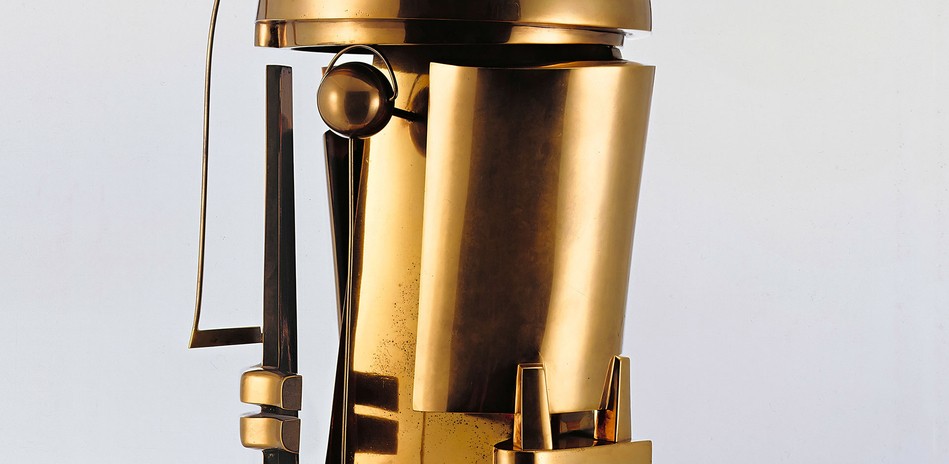
Rudolf Belling
Skulptur 23, 1923/1966
Мessing, poliert (Detail)
© bpk / Nationalgalerie, Staatliche Museen zu Berlin / Reinhard Friedrich / VG Bild-Kunst, Bonn 2017
Skulptur 23, 1923/1966
Мessing, poliert (Detail)
© bpk / Nationalgalerie, Staatliche Museen zu Berlin / Reinhard Friedrich / VG Bild-Kunst, Bonn 2017
RUDOLF BELLING
Sculptures and Architectures
8 April - 17 September 2017
Rudolf Belling (1886–1972) was one of the most important German sculptors of classical modernism. Berlin’s Nationalgalerie, which held the artist’s first museum exhibition in 1924, now presents this pioneer of sculptural abstraction in the large-scale show Rudolf Belling. Sculptures and Architectures. The exhibition is the first comprehensive presentation of his oeuvre in 40 years and shows Belling’s importance for the avant-garde of the 20th century. The exhibition takes eleven main works from the 1920s as its point of departure, including the famous Dreiklang (Triad, 1919/24). The total of around 80 exhibited items from the 1910s to the 1970s, including sculptures, drawings, models, films, photographs, and figures, illuminate the many facets of a sculptor who did not limit his work to the medium of sculpture alone.
Belling’s artistic creation over six decades was shaped by a unique variety: his stylistic vocabulary ranges from expressionism to new objectivity, futurism to constructivism, abstraction to naturalism. In view of the genres, he also violated standard lines of division. He worked as a stage designer and costume designer, an architectural and advertising sculptor, a portraitist, and a designer; in collaboration with architects, he created interiors, architectural sculpture, fountains, and monuments; construction utopias found expression in visionary designs; his “fashion sculpture” is considered still today an outstanding example of the modern mannequin.
This border-crossing heterogeneity was something that Belling pursued quite consciously: “Whether figurative or abstract, I give myself permission to do anything that seems necessary to form in an organically sensible way,” the artist wrote in 1922. The principles of the “Belling System,” as he called it, include a conception of sculpture as seen from many different perspectives and the inclusion of empty space as an elementary compositional element.
To mark the exhibition, an extensive catalogue will be produced, the first on Rudolf Belling that presents his entire oeuvre from 1906 to 1972 in detail, featuring texts and large-format illustrations. In German language with English summaries, 336 pages, ca. 310 color illustrations, 35 Euro. Available for purchase at the museum or online www.rudolfbellinginberlin.de.
The exhibition is made possible by the Freunde der Nationalgalerie.
Sculptures and Architectures
8 April - 17 September 2017
Rudolf Belling (1886–1972) was one of the most important German sculptors of classical modernism. Berlin’s Nationalgalerie, which held the artist’s first museum exhibition in 1924, now presents this pioneer of sculptural abstraction in the large-scale show Rudolf Belling. Sculptures and Architectures. The exhibition is the first comprehensive presentation of his oeuvre in 40 years and shows Belling’s importance for the avant-garde of the 20th century. The exhibition takes eleven main works from the 1920s as its point of departure, including the famous Dreiklang (Triad, 1919/24). The total of around 80 exhibited items from the 1910s to the 1970s, including sculptures, drawings, models, films, photographs, and figures, illuminate the many facets of a sculptor who did not limit his work to the medium of sculpture alone.
Belling’s artistic creation over six decades was shaped by a unique variety: his stylistic vocabulary ranges from expressionism to new objectivity, futurism to constructivism, abstraction to naturalism. In view of the genres, he also violated standard lines of division. He worked as a stage designer and costume designer, an architectural and advertising sculptor, a portraitist, and a designer; in collaboration with architects, he created interiors, architectural sculpture, fountains, and monuments; construction utopias found expression in visionary designs; his “fashion sculpture” is considered still today an outstanding example of the modern mannequin.
This border-crossing heterogeneity was something that Belling pursued quite consciously: “Whether figurative or abstract, I give myself permission to do anything that seems necessary to form in an organically sensible way,” the artist wrote in 1922. The principles of the “Belling System,” as he called it, include a conception of sculpture as seen from many different perspectives and the inclusion of empty space as an elementary compositional element.
To mark the exhibition, an extensive catalogue will be produced, the first on Rudolf Belling that presents his entire oeuvre from 1906 to 1972 in detail, featuring texts and large-format illustrations. In German language with English summaries, 336 pages, ca. 310 color illustrations, 35 Euro. Available for purchase at the museum or online www.rudolfbellinginberlin.de.
The exhibition is made possible by the Freunde der Nationalgalerie.
